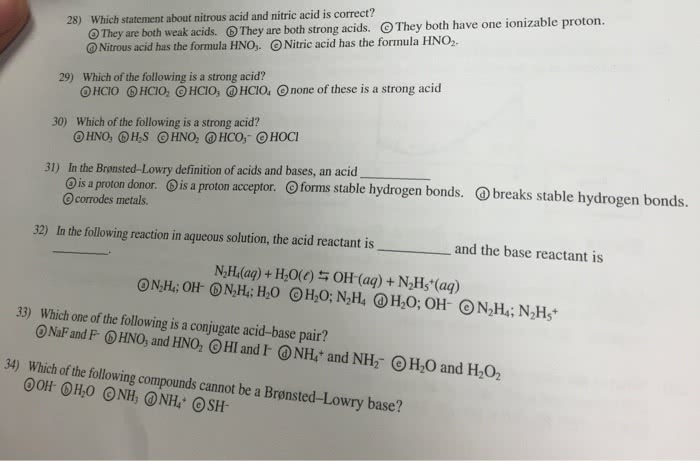CHE 1302 Study Guide - Quiz Guide: Polar Effect, Lewis Acids And Bases, Benzene
Document Summary
H+ = proton; in solution they"re hydrated: h3o+, called hydronium ions. Strong acids/bases completely dissociate (ionize) in solution; weak acids/bases are in equilibrium between ionized and non-ionized forms. H3o+ + a and the equilibrium constant is ka = [h3o+][a ]/[ha] Bh+ + oh and the equilibrium constant is kb = [bh+][oh ]/[b] Weak acids/bases are stronger if ka or kb is larger the above equilibria lie further to the right also: as ha becomes stronger, the conjugate base a becomes weaker. There are six common strong acids: hcl, hbr, hi, hno3, h2so4, hclo4 ; assume all others are weak. (note: h2so4 strong in first ionization but weak in second ionization) the strong bases are moh (m = Li, na, k, rb, cs) and m(oh)2 (m = mg, ca, sr, ba) ; assume all others are weak. H3o+ + oh k for this equilibrium is the ionic product of h2o, known as.




